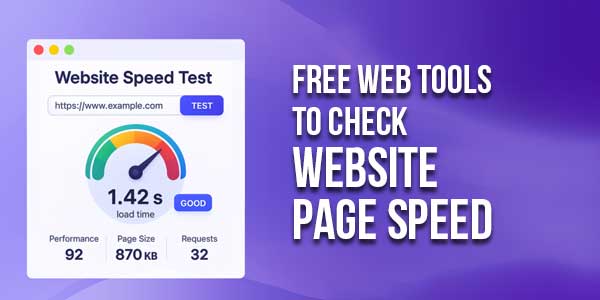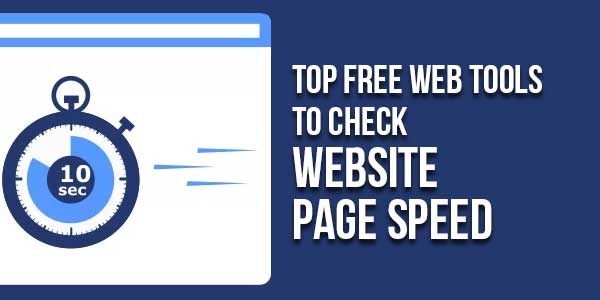
Hey there, fellow website owner! Can I ask you a question that keeps me up at night sometimes? How long are you willing to wait for a website to load before you hit that back button and try another one?
If you’re anything like me, your patience wears thin after just a few seconds. And you know what? So do your visitors. I learned this lesson the hard way when I noticed my blog’s bounce rate creeping up despite publishing what I thought was my best content yet.
It wasn’t until I actually timed how long my pages took to load that I had my “aha!” moment. We’re talking 7-8 seconds on mobile! No wonder people were leaving. That experience sent me down the rabbit hole of website performance optimization, and today I want to share the exact free tools that helped me turn things around.
Table of Contents
Why Page Speed Isn’t Just A Technicality (And Why I Became Obsessed)
Let me tell you a quick story. About a year ago, I was pretty proud of my blog’s design. I had these beautiful high-resolution images, custom fonts, and all the bells and whistles. Traffic was growing steadily, but my conversion rates for email signups were… underwhelming.
Then one day, my cousin mentioned she’d tried to read my latest post on her phone while waiting in line at the grocery store. “It took forever to load,” she said casually. “I just closed it and checked Instagram instead.”
Ouch. That casual comment hit me right in the blogger ego. But it was the wake-up call I needed. I started researching and discovered what should have been obvious:
- 47% of consumers expect a web page to load in 2 seconds or less
- 40% will abandon a website that takes more than 3 seconds to load
- A 1-second delay in page response can result in a 7% reduction in conversions
Suddenly, my beautiful, slow-loading blog didn’t seem so beautiful anymore. I needed to fix this, but where to start? That’s when I discovered the world of page speed testing tools.
The Game-Changing Free Tools That Saved My Slow Website
After testing dozens of tools (yes, I went a little overboard), I found several free options that gave me the insights I needed without breaking the bank. Here are my absolute favorites:
Google PageSpeed Insights: The Industry Standard
If you only use one tool from this list, make it this one. PageSpeed Insights has become my go-to for quick checks because it gives you both lab data (controlled testing environment) and field data (real-world user experience).
What I love about it:
- It tests both mobile and desktop performance separately (crucial since Google now uses mobile-first indexing)
- Provides specific, actionable suggestions for improvement
- Shows Core Web Vitals metrics that actually impact your Google rankings
- It’s completely free with no limits on how many times you can test
The first time I ran my site through PageSpeed Insights, I got a mobile score of 42 out of 100. I nearly cried. But the tool didn’t just tell me I was failing—it gave me a detailed list of exactly what to fix. Eliminating render-blocking resources, optimizing images, leveraging browser caching—it was all there.
How To Interpret Your PageSpeed Insights Score
When you’re starting out, those color-coded scores can be intimidating:
- Green (90-100): You’re doing amazing! Keep up the good work.
- Orange (50-89): There’s room for improvement, but you’re on the right track.
- Red (0-49): Your site needs significant optimization work.
But here’s what I learned: Don’t obsess over hitting 100. It’s nearly impossible for most sites, and the difference between 95 and 100 is negligible in real-world impact. Focus on getting to green territory, then move on to other optimization tasks.
GTmetrix: The Detailed Analyst
If PageSpeed Insights gives you the “what,” GTmetrix gives you the “why” and “how.” This tool became my second favorite because of the incredible depth of information it provides.
Why GTmetrix stands out:
- Combines Google PageSpeed Insights and Yahoo YSlow metrics
- Lets you test from different locations around the world
- Provides video recordings of your page loading (super helpful for seeing what users experience)
- Offers historical data to track your progress over time
I remember the first time I watched the video recording of my site loading. Seeing that blank white screen for 3 seconds before anything appeared was eye-opening. No wonder people were bouncing!
Pingdom Website Speed Test: The User-Friendly Option
For those who might feel overwhelmed by technical data, Pingdom offers a cleaner, more visual interface that’s easier to digest. It’s like the friendly neighbor who explains things simply without making you feel stupid.
Pingdom’s strengths:
- Clear performance grade and load time
- Visual breakdown of content by type (HTML, images, CSS, etc.)
- Identifies which files are slowing down your site the most
- Allows testing from multiple global locations
When I was just starting to understand page speed, Pingdom helped me grasp the basics before I dove into more complex tools. It showed me that my unoptimized images were accounting for over 60% of my page size—a problem I could actually fix!
WebPageTest: The Power User’s Playground
WebPageTest is what I graduated to when I wanted to get really nerdy about performance. This open-source tool offers an incredible level of detail and customization that the other tools don’t provide.
Why WebPageTest is worth learning:
- Test from specific devices and connection types (3G, 4G, etc.)
- Run multiple tests to get consistent results
- View detailed filmstrip view of loading process
- Access to advanced metrics like Speed Index and Time to First Byte
The first time I used WebPageTest, I felt like I needed a degree to understand all the data. But once I got the hang of it, the insights were invaluable. I could see exactly how my site performed on a slow 3G connection—which represented a significant portion of my mobile audience.

Putting It All Together: My Page Speed Optimization Routine
After months of tweaking, testing, and sometimes breaking things (then fixing them), I’ve developed a simple routine that keeps my site running smoothly:
- Weekly quick check: Use PageSpeed Insights on my homepage and a few key articles
- Monthly deep dive: Run GTmetrix on my most popular pages
- Before/after testing: Whenever I make significant changes, I test with WebPageTest to measure the impact
- Competitor analysis: Occasionally test competitor sites to benchmark my performance
This routine takes me less than 30 minutes a week but has helped me maintain mobile scores in the 80-90 range—a huge improvement from that initial 42!
“Optimizing page speed isn’t about chasing perfect scores—it’s about creating better experiences for real people. Sometimes a one-second improvement means the difference between a reader who engages and one who bounces.”
Common Page Speed Mistakes I Made (So You Don’t Have To)
Let me save you some time and frustration by sharing the mistakes I made along the way:
Ignoring Image Optimization
I used to upload huge images straight from my camera, thinking WordPress would handle the resizing. It does, but not optimally. Now I:
- Resize images to the exact dimensions needed before uploading
- Use modern formats like WebP when possible
- Compress images without noticeable quality loss
- Lazy load images so they only load when needed
Overloading With Plugins
When I first started blogging, I installed every cool plugin I found. Big mistake. Each plugin adds HTTP requests, database queries, and often extra CSS/JavaScript. Now I:
- Regularly audit my plugins and remove what I don’t actively use
- Choose lightweight alternatives when available
- Test site speed before and after installing new plugins
Not Leveraging Browser Caching
I didn’t understand caching for the longest time. Essentially, it tells returning visitors’ browsers to store certain files locally so they don’t have to download them again. Setting proper cache headers can dramatically improve load times for repeat visitors.
Beyond The Tools: The Human Element Of Page Speed
Here’s the thing I wish someone had told me when I started: Page speed optimization isn’t just about technical metrics. It’s about people.
That extra second of loading time might mean:
- A parent trying to quickly look up information while caring for a crying baby
- A commuter trying to read your article between subway stops
- Someone with a slower internet connection in a rural area
- An older user who might already be frustrated with technology
When I started thinking about page speed in terms of human patience and circumstances, it changed how I prioritized optimization. It wasn’t about gaming Google’s algorithm anymore—it was about being accessible and respectful of my readers’ time and attention.
Frequently Asked Questions (FAQs)
What Is A Good Page Load Time?
Aim for under 3 seconds. Google recommends 2 seconds or less, but under 3 seconds is considered acceptable for most websites. The faster, the better – every second counts when it comes to user experience and conversion rates.
How Often Should I Check My Website Speed?
I recommend a quick check monthly and a comprehensive review quarterly. Test more frequently when making significant changes to your site, like adding new plugins or changing themes, to ensure you haven’t accidentally hurt performance.
Why Does My Mobile Speed Score Differ From Desktop?
Mobile devices typically have less processing power and often use slower network connections. Google also uses different criteria for mobile scoring since mobile user experience priorities differ from desktop. This is why mobile optimization requires special attention.
Can Too Many Images Slow Down My Website?
Absolutely! Unoptimized images are one of the most common causes of slow websites. Large image files increase page size and require more bandwidth to download. Always optimize your images before uploading and consider using lazy loading techniques.
What Are Core Web Vitals?
Core Web Vitals are a set of specific factors that Google considers important in a webpage’s overall user experience. They include Largest Contentful Paint (loading performance), First Input Delay (interactivity), and Cumulative Layout Shift (visual stability).
Does Website Hosting Affect Page Speed?
Yes, significantly! Your hosting provider, server location, and hosting plan all impact how quickly your website can deliver content to visitors. Shared hosting is often slower than VPS or dedicated hosting, but optimized shared hosting can still perform well.
How Can I Improve My Page Speed Score Quickly?
Start with image optimization, enable compression, leverage browser caching, and minimize CSS/JavaScript. These changes often provide the biggest improvements with the least technical complexity. Consider using a caching plugin if you’re on WordPress.
Do I Need A CDN For Better Page Speed?
If you have an international audience, a CDN (Content Delivery Network) can significantly improve load times by serving your content from servers closer to your visitors. For primarily local audiences, the benefits may be less noticeable but still valuable.
Why Do Different Tools Show Different Load Times?
Different tools measure different metrics from different locations under different conditions. Some measure time to first byte, others measure fully loaded time, and they may test from various global locations with different simulated connection speeds.
Is Page Speed Really That Important For SEO?
Yes! Google explicitly states that page speed is a ranking factor, especially for mobile search. Beyond SEO, speed dramatically impacts user experience, bounce rates, and conversions – all of which indirectly affect your search visibility and success.
Your Next Steps: From Analysis To Action
Now that you have these powerful free tools at your disposal, what should you do next? Here’s my suggested action plan:
- Run your site through all four tools I mentioned to get a comprehensive baseline
- Prioritize the issues they identify – start with the ones marked as high impact
- Make one change at a time and retest so you know what actually worked
- Don’t get discouraged if your scores are low initially – improvement is a process
Remember when I told you about my dismal 42 mobile score? After six months of consistent optimization, I now consistently score in the high 80s. More importantly, my bounce rate decreased by 34%, and my average time on page increased by nearly a minute.
Page speed optimization might seem technical and overwhelming at first, but I promise it gets easier. And the results—both in terms of user satisfaction and business metrics—are absolutely worth the effort.
Have you tested your site’s speed recently? Which of these tools are you most excited to try? I’d love to hear about your experiences—drop me a comment on my contact page or check out more webmaster resources on my blog.
Happy optimizing!


















Be the first to write a comment.